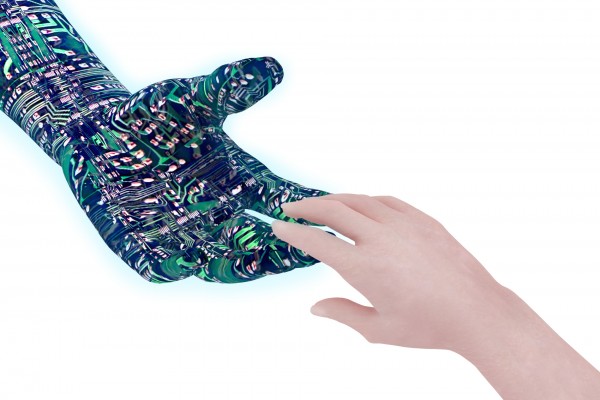Device developed at Washington University may allow sensations in prosthetic hands
To the nearly 2 million people in the United States living with the loss of a limb, prosthetic devices provide restored mobility, yet lack sensory feedback. A team of engineers and researchers at Washington University is working to change that so those with upper limb prosthetics can feel hot and cold and the sense of touch through their prosthetic hands.
Zhang wins Young Investigator Program award from Navy
Fuzhong Zhang, PhD, of the School of Engineering & Applied Science at
Washington University in St. Louis, has received a Young Investigator
Program award from the Office of Naval Research to fund his synthetic biology research.
IdealTap takes $25,000 prize in 2015 Discovery Competition
IdealTap, a medical device that would make spinal taps easier and more efficient for the patient and physician, has won $25,000 in cash in the 2015 Discovery Competition in the School of Engineering & Applied Science.
Sakiyama-Elbert completes leadership program
Shelly Sakiyama-Elbert, PhD, of the School of Engineering & Applied Science at Washington University in St. Louis, recently graduated from Executive Leadership in Academic Technology and Engineering (ELATE) at Drexel University, a professional development program for women in academic STEM fields.
I-CARES announces 2015 funded research projects
The International Center for Advanced Renewable Energy and Sustainability (I-CARES) has announced the winners from its 2015 call for proposals. This year, the center awarded funds to 10 projects involving nearly 30 Washington University faculty from four schools.
Washington University opens computer science course to Harris-Stowe State University students
A new agreement between Washington University in St. Louis and Harris-Stowe State University (HSSU) will allow HSSU students to complete computer science course work at Washington University at no cost.
Holtzman, Lützeler to receive 2015 faculty achievement awards
David M. Holtzman, a leading expert in researching the underlying mechanisms that lead to Alzheimer’s disease, and Paul Michael Lützeler, an authority on 18th, 19th and 20th century German literature, will receive Washington University in St. Louis’ 2015 faculty achievement awards, Chancellor Mark S. Wrighton announced.
Center on medicine receives grant for public-school outreach
The Center of Regenerative Medicine has received a $4,000 grant from the Society for Developmental Biology to aid in the project titled “Developmental Biology Educational Outreach to St. Louis Public Schools.”
The Sustainability Exchange: Interdisciplinary class tackles real-world problems
This spring, the schools of Engineering & Applied Science, Arts & Sciences and the Sam Fox School of Design & Visual Arts at Washington University in St. Louis launched “The Sustainability Exchange,” a unique course bringing students from across campus together to work on interdisciplinary teams to tackle real-world challenges in energy, environment and sustainability.
Three engineering faculty receive grants from the Air Force
Three faculty members in the School of Engineering & Applied Science at Washington University in St. Louis have received grants from the Air Force Office of Scientific Research’s Young Investigator Research Program.
View More Stories

